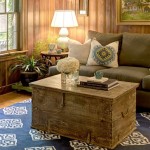How To Decorate a Concrete Basement Wall
Concrete basement walls, while structurally sound, often present a cold, unfinished aesthetic. Fortunately, numerous decorative options exist to transform these spaces into comfortable and inviting areas. Choosing the right approach depends on the desired aesthetic, budget, and the existing condition of the walls.
Preparing the Walls: Proper preparation is crucial for any decorative treatment. Begin by cleaning the walls thoroughly with a stiff brush and a suitable cleaning solution, such as trisodium phosphate (TSP). This removes dirt, efflorescence, and any loose debris. Address any cracks or imperfections with a concrete patching compound, allowing ample drying time before proceeding.
Applying a Waterproofing Sealant: Basements are prone to moisture, so applying a waterproofing sealant is highly recommended, especially in areas with high water tables. This sealant creates a barrier against moisture intrusion, preventing potential damage to decorative finishes. Several types of waterproofing sealants are available, including cementitious coatings, bituminous coatings, and liquid rubber membranes.
Painting: Painting is a cost-effective and versatile method for decorating concrete basement walls. Choose a masonry paint specifically formulated for concrete surfaces. These paints typically offer better adhesion and moisture resistance than standard interior paints. A primer designed for masonry surfaces is also recommended to improve paint adhesion and coverage. Apply multiple coats for optimal color saturation and durability.
Drywall Installation: Installing drywall creates a finished look and provides a surface suitable for various decorative treatments. Construct a frame using metal furring strips attached to the concrete walls. These strips create an air gap for ventilation and prevent moisture from transferring directly to the drywall. Attach drywall sheets to the furring strips, tape the seams, apply joint compound, and sand smooth for a seamless surface. The finished drywall can then be painted, wallpapered, or textured.
Wood Paneling: Wood paneling adds warmth and character to a basement. Similar to drywall installation, furring strips are often used to create an air gap between the concrete and the wood. Various wood species and finishes are available, allowing for customization to suit individual preferences and design styles. Ensure the chosen wood is suitable for basement environments and consider treating it with a sealant to protect against moisture.
Decorative Concrete Coatings: Several decorative concrete coatings can transform plain concrete walls into visually appealing surfaces. Epoxy coatings provide a durable, high-gloss finish and are available in various colors and textures. Polyurethane coatings offer similar durability and are resistant to chemicals and abrasion. Metallic epoxy coatings create a unique, shimmering effect.
Textured Finishes: Textured finishes can add depth and visual interest to concrete walls. These finishes can be achieved using textured paints, textured rollers, or by applying a skim coat of plaster or concrete and then manipulating the surface while it is still wet. Techniques such as combing, sponging, and stenciling can create various patterns and textures.
Wall Coverings: Wallpaper and other wall coverings offer a wide range of designs and patterns for decorating basement walls. However, directly applying wallpaper to concrete can be challenging due to moisture and texture issues. Applying a liner paper prior to wallpapering can improve adhesion and mitigate moisture problems. Alternatively, applying wallpaper to drywall installed over furring strips is a more reliable method.
Wall Cladding: Stone, brick, or tile cladding can create a dramatic and sophisticated look in a basement. These materials are typically applied using a thin-set mortar or adhesive. Cladding adds texture and visual warmth and can be used to create accent walls or cover entire wall surfaces. Ensure proper ventilation behind the cladding to prevent moisture buildup.
Fabric Wall Hangings: Fabric wall hangings offer a soft and decorative touch to concrete basement walls. Large tapestries or custom-made fabric panels hung from ceiling-mounted tracks or rods can soften the hard surfaces of concrete and add color and pattern. This approach offers flexibility and can be easily changed to update the décor.
Considerations for Basement Environments: When choosing decorative options for basement walls, consider the specific environmental conditions. Basements are often cooler and more humid than other living spaces. Select materials resistant to moisture, mold, and mildew. Ensure adequate ventilation to prevent moisture buildup, which can lead to structural issues and damage to decorative finishes.
Lighting: Effective lighting plays a crucial role in enhancing the aesthetic appeal of finished basement walls. Recessed lighting, wall sconces, and strategically placed floor lamps can highlight textures and colors, creating a warm and inviting atmosphere. Incorporating natural light wherever possible can also significantly improve the overall ambiance of the basement.
:strip_icc()/100411894-b6c1f41941194958b4b347ad47b1998e.jpg?strip=all)
18 Ways To Make Your Basement Walls Beautiful

10 Ways To Cover Concrete Walls In A Basement Finish

16 Basement Ideas Bob Vila

Stylish Solutions Covering Unfinished Basement Walls Csg Renovation

Stylish Solutions Covering Unfinished Basement Walls Csg Renovation

25 Brilliant Unfinished Basement Ideas You Will Adore

Stylish Solutions Covering Unfinished Basement Walls Csg Renovation

71 Basement Wall Ideas To Elevate Your Home S Aesthetics
:strip_icc()/BHG145348-624dac2bb4ab4c06baf0e3b9732c6446.jpg?strip=all)
18 Ways To Make Your Basement Walls Beautiful
:strip_icc()/100160338-94183feb6e2b47c98f2d931608ce3352.jpg?strip=all)
18 Ways To Make Your Basement Walls Beautiful







